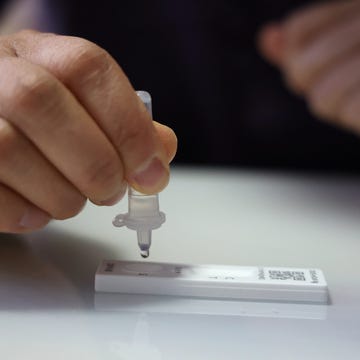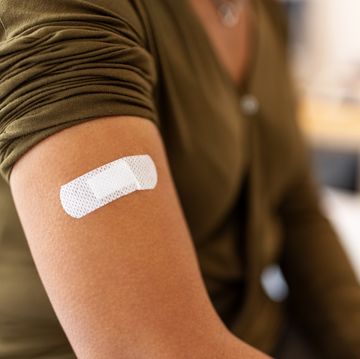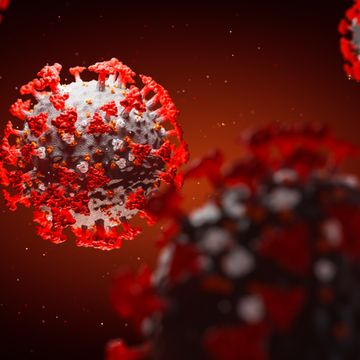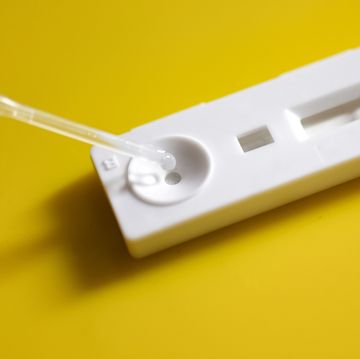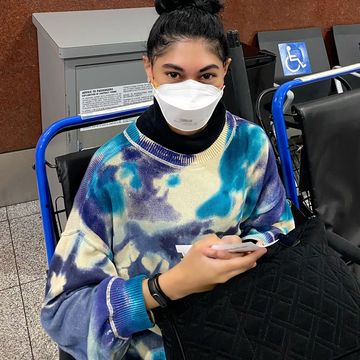Nothing puts a damper on your holiday plans like a positive COVID-19 test, am I right?
But what if that line is, like, super faint? Do you still have COVID—or can you go ahead and attend your office party like you planned?
Well, unfortunately, infectious disease experts stress that a faint line is definitely worth paying attention to—although a re-test may be in your future.
Here's what you need to know.
What does a faint line on a COVID test mean?
It’s probably not what you’re hoping to hear, but a faint line on a COVID test means you have COVID-19. “A faint line is a positive test result,” says infectious disease expert Amesh Adalja, MD, a senior scholar at the Johns Hopkins Center for Health Security.
Thomas Russo, MD, a professor and chief of infectious diseases at the University at Buffalo in New York, agrees. “A faint line means you’re almost certainly positive,” he says.
Does the line’s darkness matter?
Kind of. If you test positive—faint or not—it means that you have infectious COVID-19 particles in your body, Dr. Russo says.
But how dark the line is does give you a little insight into what’s going on, Dr. Adalja says. “The less dark, the line is, the less viral material that is present,” he says. “This could reflect diminishing contagiousness, or the start of it.”
Meaning, you could be becoming more contagious or less contagious at that point, but a lot depends on the context. If you’ve been sick for a while and get a faint test result, it might mean you’re getting better and are less likely to make others sick. If you just started feeling sick and you got a faint line, you likely only recently became infectious.
Remember, though, the CDC still advises staying home for five days after testing positive—or until you test negative.
It's also entirely possible that you just didn’t get a great sample, which could lead to a faint line, Dr. Russo says.
Does a faint line count as a positive?
Yes, it does. (Sorry.) “Since home tests are not as sensitive as PCR tests—which are considered the gold standard of COVID-19 testing—getting a positive result still means that you have a fair amount of virus in your body,” Dr. Russo says. “A faint line means you’re positive and infectious.”
Are at-home rapid tests reliable for the new variants?
Lots of new COVID variants have emerged since home tests were created. And, FWIW, the most common variants in the U.S. right now include HV.1, JN.1, and EG.5, according to data from the Centers for Disease Control and Prevention (CDC). But doctors stress that home tests should still detect any new variant.
Why? A lot of changes in new variants have been on the spike protein, which SARS-CoV-2 (the virus that causes COVID-19) uses to latch onto your cells and infect you. “The home tests are not based on the spike protein,” Dr. Russo says. “They detect nucleocapsid protein. The home tests should work for these new variants as well.”
Dr. Russo also stresses this point: If you have symptoms of COVID-19 and test negative, it doesn’t necessarily mean you don’t have COVID. “The sensitivity of these tests is 80 percent at best,” he says. “If the test is positive, you know you have COVID. If the result is negative, it doesn’t necessarily mean you don’t have COVID.” (Usually for reasons like the sample you took wasn't the best or the amount of virus in your body isn't high enough yet.)
If you have symptoms and test negative, he suggests testing yourself again in 24 hours and seeing what you get. If you’re still negative but feel sick, call your doctor. It’s entirely possible that you have the flu, RSV, or something else.


